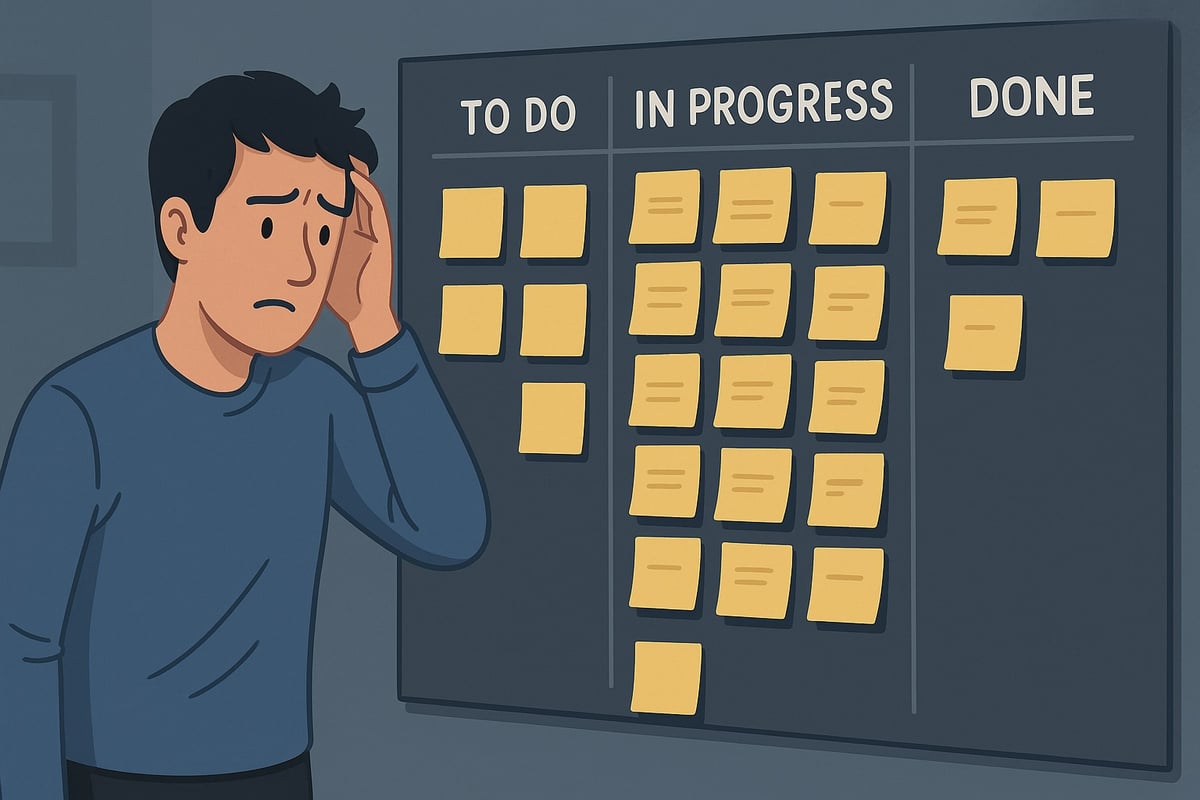I watched a startup CEO stare at his team’s metrics dashboard for ten minutes before turning to me. “We’re doing everything right,” he said. “Agile ceremonies, automated tests, microservices. So why does every feature still take weeks to ship?” The answer was hidden in plain sight. His team had several bottlenecks when there can only be one.
That conversation sparked my obsession with Theory of Constraints. After living through similar frustrations at multiple different companies, I’ve learned one truth: smart teams solve the wrong problems. McKinsey found that software projects run 33% over schedule on average. The culprit? Teams optimize everything except their actual constraint.
The Value Stream Reality Check
Here’s what I do with every team I help: grab a whiteboard and map your flow. Start simple. Draw boxes for “Idea” → “Code” → “Review” → “Test” → “Deploy” → “Monitor”. Now add the average time work sits between each step.
The longest wait is your bottleneck. Period.
Most teams discover their developers spend only 32% of their time actually coding. The rest? Waiting. Waiting for reviews. Waiting for builds. Waiting for deployments. That’s not a people problem, it’s a flow problem.
Common patterns I’ve encountered:
- Code review graveyards: 15+ open PRs, reviewers drowning
- CI/CD traffic jams: 45-minute builds creating merge conflicts
- Manual release theater: Weekly deploy windows with 20 PRs queued
- Incident debt: Teams spending over 20% of sprints on firefighting
Finding Your Constraint with DORA
Throughout my career, I’ve found DORA metrics cut through the noise. Only 19% of teams achieve elite performance (deploying multiple times daily with under one-hour lead time). The rest? They’re optimizing the wrong constraints.
Your constraint shows up in these numbers:
- Lead time spike between commit and deploy? Check your CI/CD
- High change failure rate? Your testing is the constraint
- Deployment frequency stuck at weekly? Release process bottleneck
- MTTR measured in days? Incident response is your constraint
Don’t overthink this. Measure for one week, find the biggest number, and you’ve found your constraint.
The TOC Playbook
I learned Theory of Constraints the hard way—by violating every principle. Now I follow these five steps religiously:
1. Exploit
Squeeze more from your constraint without spending money. When code reviews bottlenecked my team, we implemented review buddies and 2-hour SLAs. Review time dropped 60% overnight.
2. Subordinate
Everything else must serve the constraint. We limited WIP to match reviewer capacity. Yes, developers complained about blocked work. But overall throughput increased 40%.
3. Elevate
Only add resources after exploiting and subordinating. One team automated their entire regression suite only after optimizing test selection. The result? 40-60% lead time reduction in three months.
4. Don’t Let Inertia Win
Your old bottleneck will improve. A new one emerges. Most teams stop here, declaring victory. Elite teams keep hunting.
Your 30-Day Action Plan
Week 1: Map and Measure
- Draw your value stream (30 minutes, one whiteboard)
- Add wait times between each step
- Identify your single longest queue
Week 2-3: Exploit and Subordinate
- List 5 ways of adding capacity to your constraint without hiring
- Implement the top 2
- Limit WIP to match constraint capacity
- Measure daily (simple spreadsheet works)
Week 4: Elevate and Automate
- If constraint persists, now invest in tools/people
- Set up alerts when constraint metrics degrade
- Schedule monthly constraint review
Automation triggers I always implement:
- Slack alert when PR queue exceeds 8 hours
- Dashboard showing real-time pipeline wait
- Auto-flag when deploy frequency drops
The Bottom Line
Every hour you spend optimizing non-constraints is waste. Your competitor who found their real bottleneck just lapped you.
Here’s my challenge: Map your value stream tomorrow. Find your constraint by Friday. Start exploiting it Monday. In 30 days, you’ll see why only 19% of teams reach elite performance—the other 81% are solving the wrong problem.
What’s your team’s hidden constraint? I guarantee it’s not what you think.






